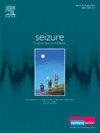辅助拉科沙胺治疗儿童耐药癫痫的疗效:系统评价、meta分析和meta回归
IF 2.8
3区 医学
Q2 CLINICAL NEUROLOGY
引用次数: 0
摘要
背景:系统评价辅助拉科沙胺(LCM)治疗儿童和青少年耐药癫痫(DRE)的疗效、安全性和耐受性。方法按照PRISMA 2020指南进行系统评价和单臂荟萃分析。检索截止到2025年4月的MEDLINE、Embase和Cochrane图书馆。观察性研究包括使用辅助LCM治疗DRE的儿科患者(18岁)。汇总估计是使用随机效应模型得出的。亚组分析评估年龄(2岁、2 - 12岁、12岁)和剂量(≤6 vs 6 mg/kg/天)。meta回归探讨了病因、同时使用钠通道阻滞剂、既往抗癫痫药物和研究设计的影响。累积分析检验了疗效和安全性的时间趋势。结果12项研究503例患者符合纳入标准。22%的患者癫痫发作自由(95% CI 15 - 31%)。≥50%的减少率在3个月时为61%,6个月时为62%,9个月时为58%,12个月时为48%。不良事件发生率为28%(19 - 37%),最常见的是嗜睡(12%)和烦躁(7%);停药率达到24%(14 - 34%)。2岁儿童12个月的反应较低(17% vs 2- 12岁的57%)。较低剂量(≤6mg /kg/天)产生较高的短期反应(68% vs 38%),但更大的停药和过敏性。meta回归将遗传病因学和钠通道阻滞剂暴露与改善的结果联系起来,而较高的平均剂量预测3个月的反应减少。累积分析显示,2020年之后的估计稳定,在12个月时衰减。结论:在儿童DRE中,尽管经常停药,但结合性LCM可能提供有意义的癫痫发作减少和可接受的耐受性。年龄、剂量和病因影响治疗反应,强调需要个体化策略和延长随访的前瞻性对照试验。本文章由计算机程序翻译,如有差异,请以英文原文为准。
Efficacy of adjunctive lacosamide in children with drug-resistant epilepsy: A systematic review, meta-analysis and meta-regression
Background
To systematically evaluate the efficacy, safety, and tolerability of adjunctive lacosamide (LCM) in children and adolescents with drug-resistant epilepsy (DRE).
Methods
A systematic review and single-arm meta-analysis was conducted in accordance with PRISMA 2020 guidelines. MEDLINE, Embase, and Cochrane Library were searched up to April 2025. Observational studies including pediatric patients (<18 years) with DRE treated with adjunctive LCM were included. Pooled estimates were derived using random-effects models. Subgroup analyses assessed age (<2, 2–12, >12 years) and dose (≤6 vs >6 mg/kg/day). Meta-regression explored the impact of etiology, concomitant sodium channel blocker exposure, prior antiseizure medications, and study design. Cumulative analyses examined temporal trends in efficacy and safety.
Results
Twelve studies comprising 503 patients met inclusion criteria. Seizure freedom was achieved in 22 % (95 % CI 15–31 %). Rates of ≥50 % reduction were 61 % at 3 months, 62 % at 6 months, 58 % at 9 months, and 48 % at 12 months. Adverse events occurred in 28 % (19–37 %), most commonly drowsiness (12 %) and irritability (7 %); discontinuation reached 24 % (14–34 %). Children <2 years had lower 12-month response (17 %¦vs 57 % in 2–12 years). Lower doses (≤6 mg/kg/day) yielded higher short-term responses (68 %¦vs 38 %) but greater discontinuation and irritability. Meta-regression linked genetic etiology and sodium channel blocker exposure with improved outcomes, while higher mean dose predicted reduced 3-month response. Cumulative analyses showed stable estimates after 2020, with attenuation at 12 months.
Conclusions
Adjunctive LCM may offer meaningful seizure reduction with acceptable tolerability in pediatric DRE, though discontinuation is frequent. Age, dose, and etiology influence treatment response, highlighting the need for individualized strategies and prospective controlled trials with extended follow-up.
求助全文
通过发布文献求助,成功后即可免费获取论文全文。
去求助
来源期刊

Seizure-European Journal of Epilepsy
医学-临床神经学
CiteScore
5.60
自引率
6.70%
发文量
231
审稿时长
34 days
期刊介绍:
Seizure - European Journal of Epilepsy is an international journal owned by Epilepsy Action (the largest member led epilepsy organisation in the UK). It provides a forum for papers on all topics related to epilepsy and seizure disorders.
 求助内容:
求助内容: 应助结果提醒方式:
应助结果提醒方式:


